Chapter 8: Design A URL Shortener
note
Designing a URL shortening service like tinyurl
Step 1 - Understand the problem and establish design scope
- Clarification questions
- Candidate: Can you give an example of how a URL shortener work?
- Interviewer: Assume URL
https://www.systeminterview.com/q=chatsystem&c=loggedin&v=v3&l=longis the original URL. Your service creates an alias with shorter length:https://tinyurl.com/ y7keocwj. If you click the alias, it redirects you to the original URL. - Candidate: What is the traffic volume?
- Interviewer:
100 millionURLs are generated per day. - Candidate: How long is the shortened URL?
- Interviewer: As short as possible.
- Candidate: What characters are allowed in the shortened URL?
- Interviewer: Shortened URL can be a combination of numbers
(0-9)and characters(a-z, AZ). - Candidate: Can shortened URLs be deleted or updated?
- Interviewer: For simplicity, let us assume shortened URLs cannot be deleted or updated.
- Here are the basic use cases:
- URL shortening: given a long URL => return a much shorter URL
- URL redirecting: given a shorter URL => redirect to the original URL
- High availability, scalability, and fault tolerance considerations
- Back of the envelope estimation
- Write operation: 100 million URLs are generated per day.
- Write operation per second: 100 million / 24 /3600 = 1160
- Read operation: Assuming ratio of read operation to write operation is 10:1, read operation per second: 1160 * 10 = 11,600
- Assuming the URL shortener service will run for 10 years, this means we must support 100 million * 365 * 10 = 365 billion records.
- Assume average URL length is 100 bytes.
- Storage requirement over 10 years: 365 billion * 100 bytes * 10 years = 365 TB
Step 2 - Propose high-level design and get buy-in
-
API Endpoints
- API REST-style
- URL shortening. To create a new short URL, a client sends a POST request, which contains one parameter: the original long URL. The API looks like this:
POST api/v1/data/shorten- request parameter:
{longUrl: longURLString} - return shortURL
- request parameter:
- URL redirecting. To redirect a short URL to the corresponding long URL, a client sends a GET request. The API looks like this:
GET api/v1/shortUrl- Return longURL for HTTP redirection
- API REST-style
-
URL redirecting
- Once the server receives a tinyurl request, it changes the short URL to the long URL with 301 redirect.
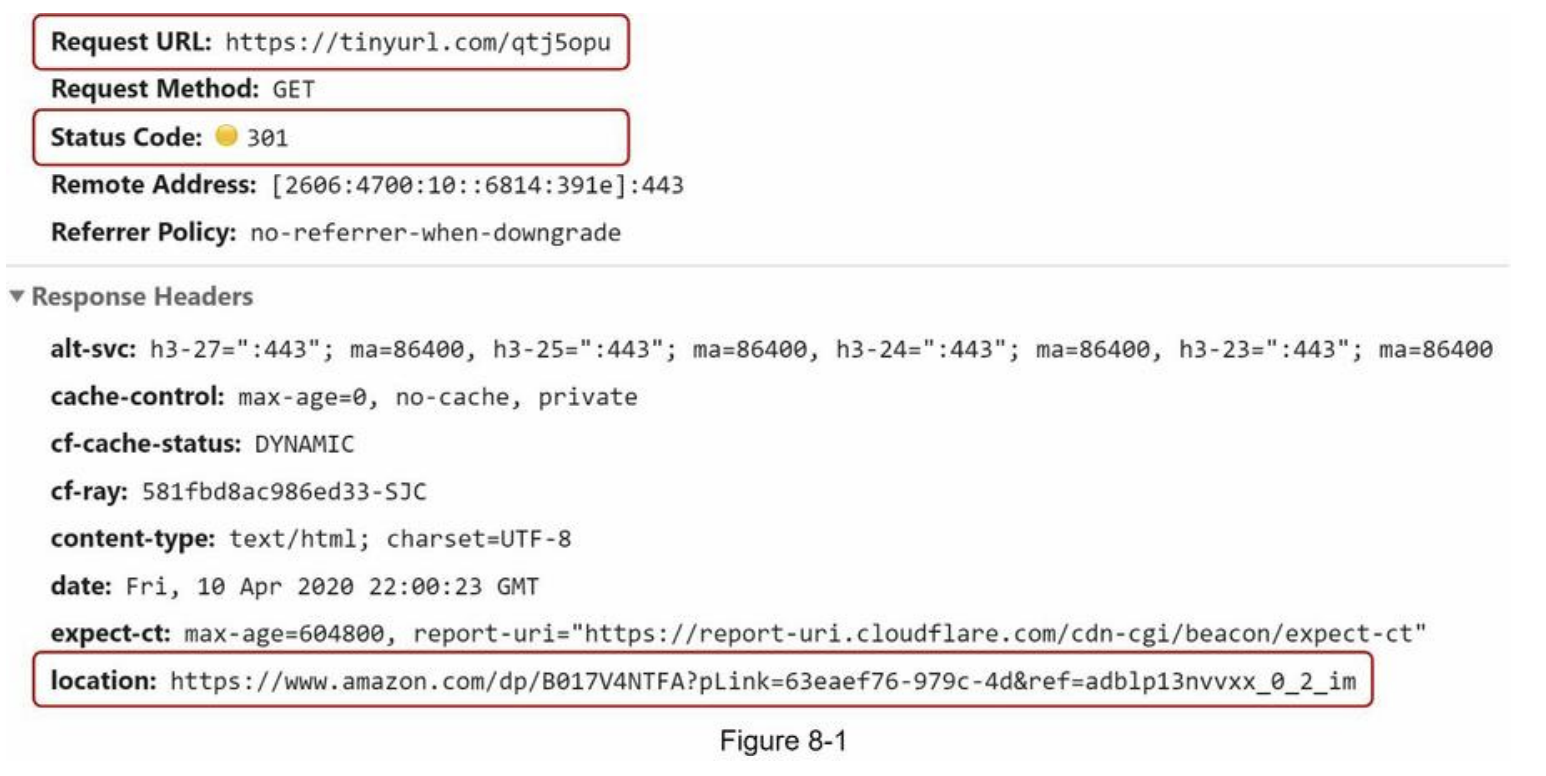
- The detailed communication between clients and servers
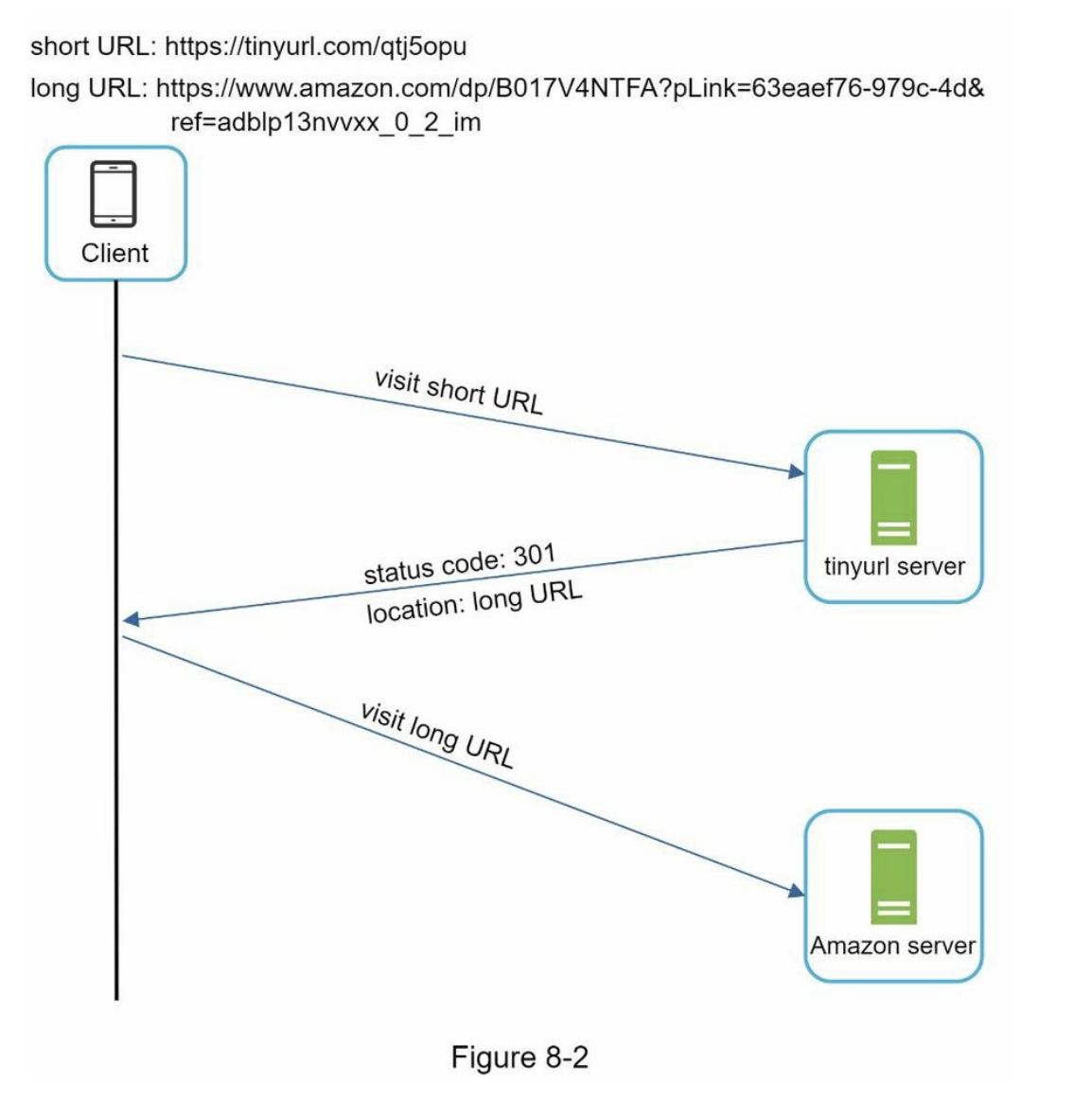
- 301 redirect vs 302 redirect
- 301 redirect
- shows that the requested URL is “permanently” moved to the long URL
- the browser caches the response, and subsequent requests for the same URL will not be sent to the URL shortening service
- requests are redirected to the long URL server directly
- ✅ Pros:
- If the priority is to reduce the server load, using 301 redirect makes sense as only the first request of the same URL is sent to URL shortening servers.
- 302 redirect
- the URL is “temporarily” moved to the long URL
- subsequent requests for the same URL will be sent to the URL shortening service first. Then, they are redirected to the long URL server
- ✅ Pros:
- if analytics is important, 302 redirect is a better choice as it can track click rate and source of the click more easily
- 301 redirect
- Using hash tables
- Assuming the hash table stores
<shortURL, longURL>pairs - Get longURL: longURL = hashTable.get(shortURL)
- Once you get the longURL, perform the URL redirect.
- Assuming the hash table stores
- Once the server receives a tinyurl request, it changes the short URL to the long URL with 301 redirect.
-
URL shortening
- assume the short URL looks like this:
www.tinyurl.com/{hashValue}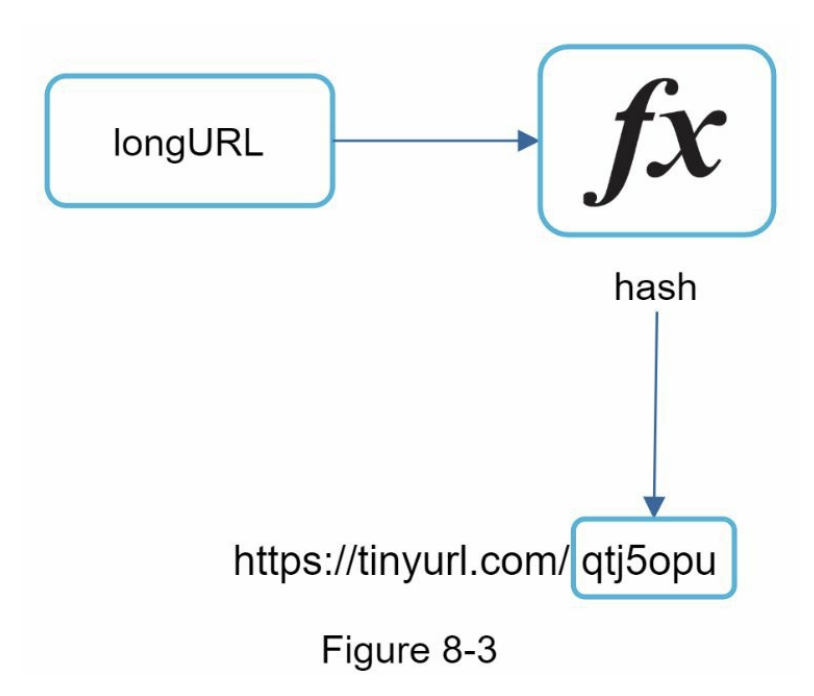
- The hash function must satisfy the following requirements:
- Each longURL must be hashed to one hashValue.
- Each hashValue can be mapped back to the longURL.
- assume the short URL looks like this:
Step 3 - Design deep dive
-
Data model
- ❌ everything is stored in a hash table → not feasible for real-world systems → memory resources are limited and expensive
- ✅ to store
<shortURL, longURL>mapping in a relational database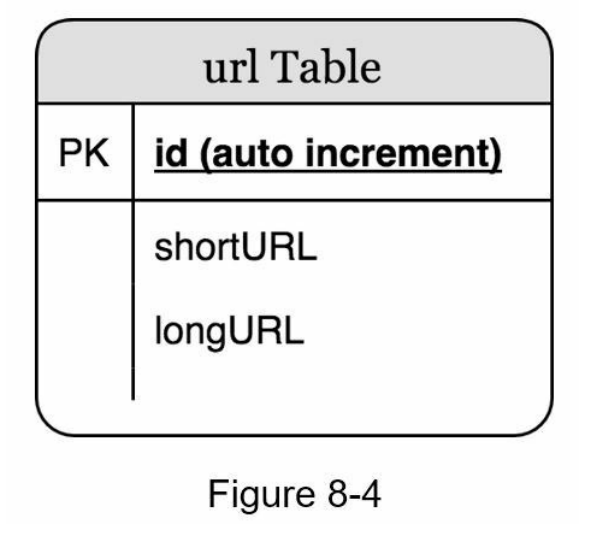
-
Hash function
-
to hash a long URL to a short URL
-
Hash value length
[0-9, a-z, A-Z], containing10 + 26 + 26 = 62possible characters- based on the back of the envelope estimation → find the smallest
nsuch that62^n ≥ 365 billion - When
n = 7,62 ^ n = ~3.5 trillion,3.5 trillionis more than enough to hold365 billionURLs, so the length of hashValue is7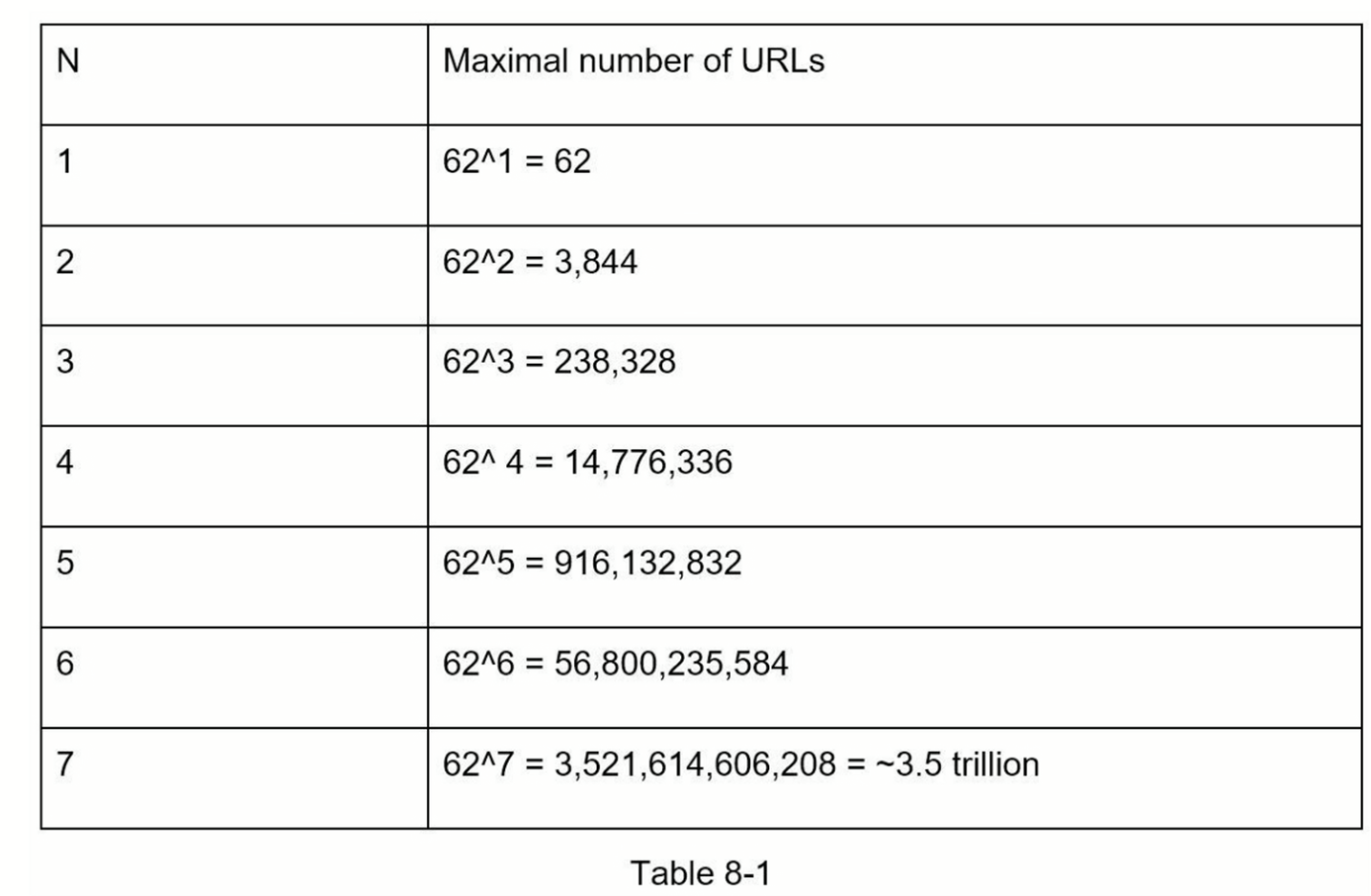
-
Hash + collision resolution
- a hash function that hashes a long URL to a 7-character string
- well-known hash functions

- even the shortest hash value (from CRC32) is too long (more than 7 characters)
- How can we make it shorter?
- ❌ to collect the first 7 characters of a hash value → hash collisions
- ✅ To resolve hash collisions
- recursively append a new predefined string until no more collision is discovered
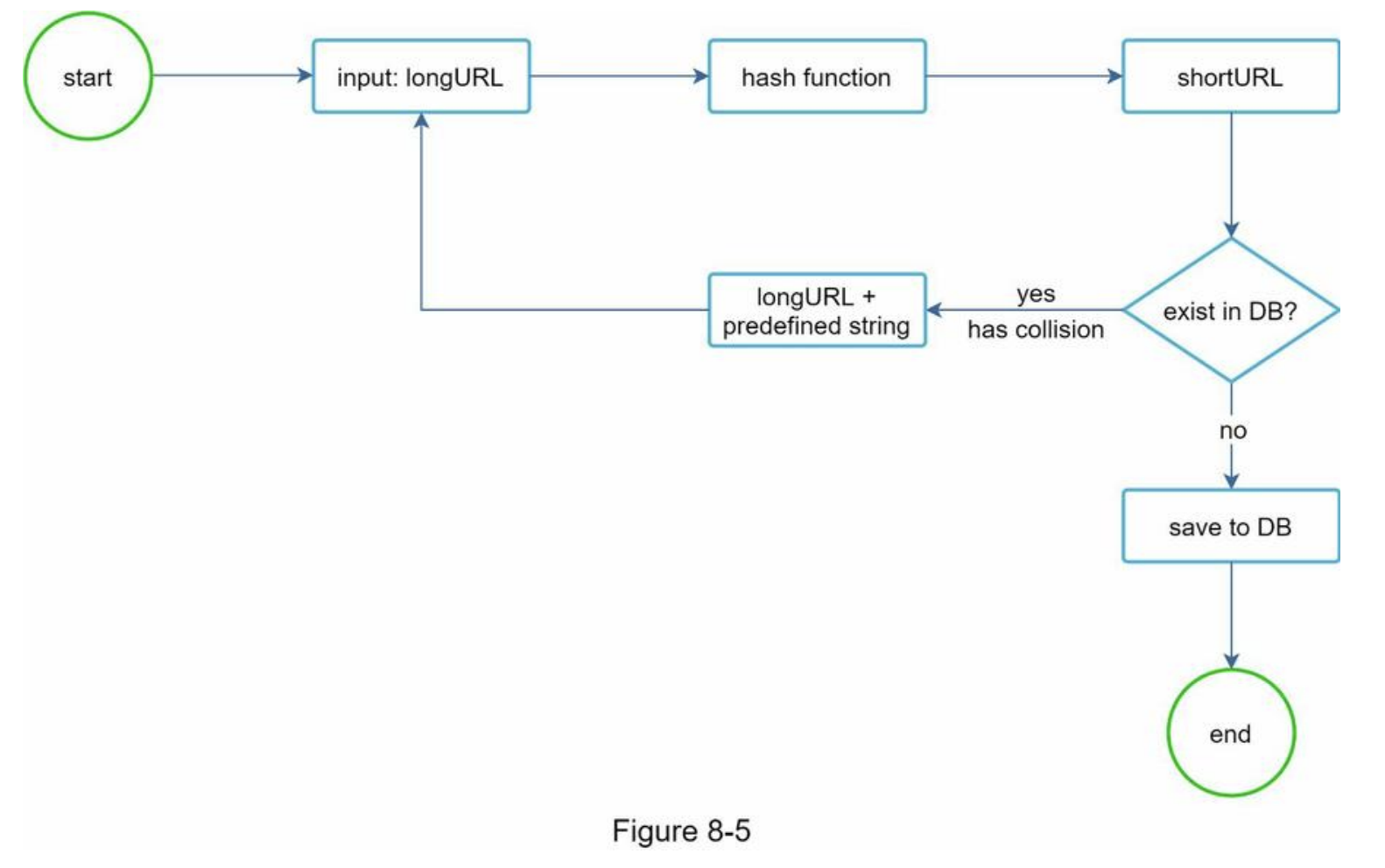
- recursively append a new predefined string until no more collision is discovered
- ✅ Pros:
- eliminate collision
- ❌ Cons:
- it is expensive to query the database to check if a shortURL exists for every request.
- 💡Improve performance:
bloom filters- a space-efficient probabilistic technique to test if an element is a member of a set
-
Base 62 conversion
- helps to convert the same number between its different number representation systems
- 62 possible characters for hashValue
- 62 characters for encoding. The mappings are:
0-0, ...,9-9,10-a,11-b, ...,35-z,36-A, ...,61-Z, whereastands for10,Zstands for61, etc.
- example: 11157 10 to base 62 representation
- 1115710 = 2 x 622 + 55 x 621 + 59 x 620 = [2, 55, 59] → [2, T, X] in base 62 representation
- the short URL is https://tinyurl.com /2TX
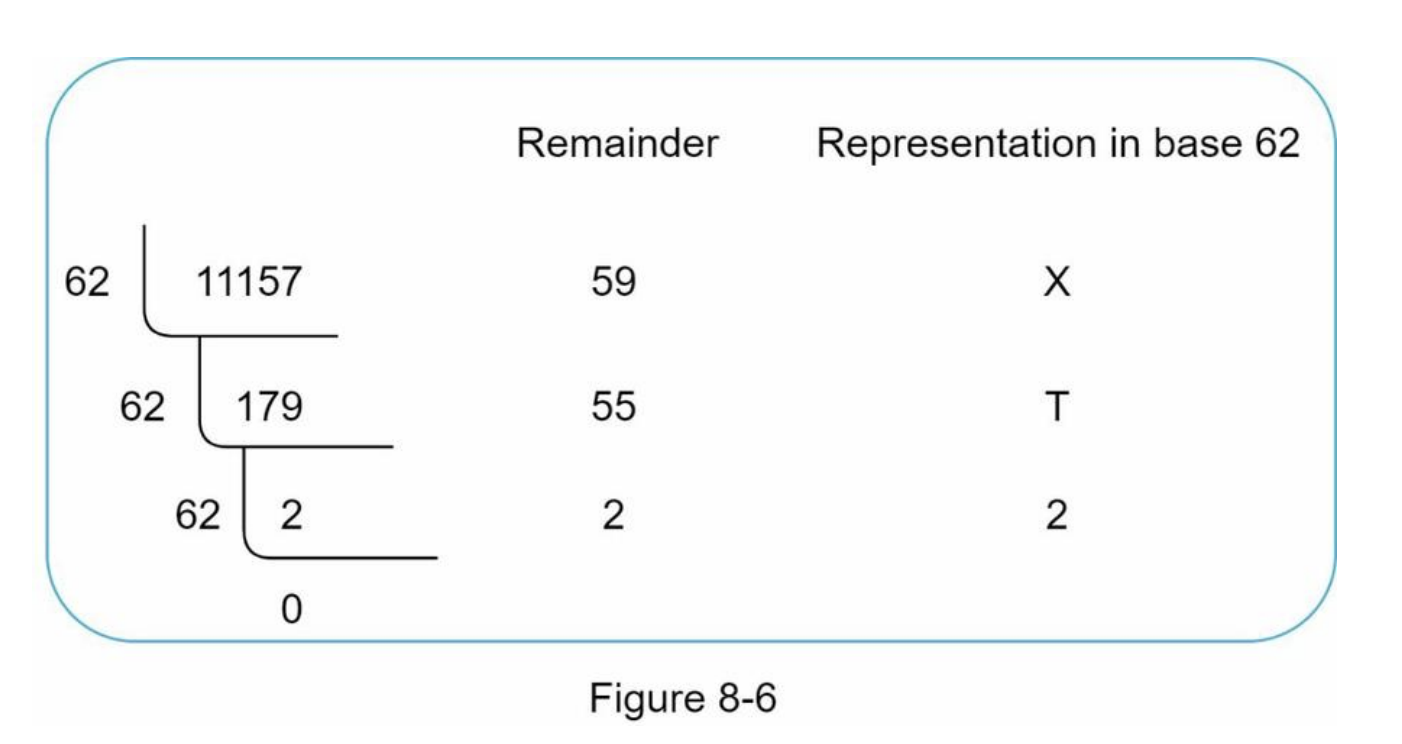
-
Comparison of the two approaches

-
URL shortening deep dive
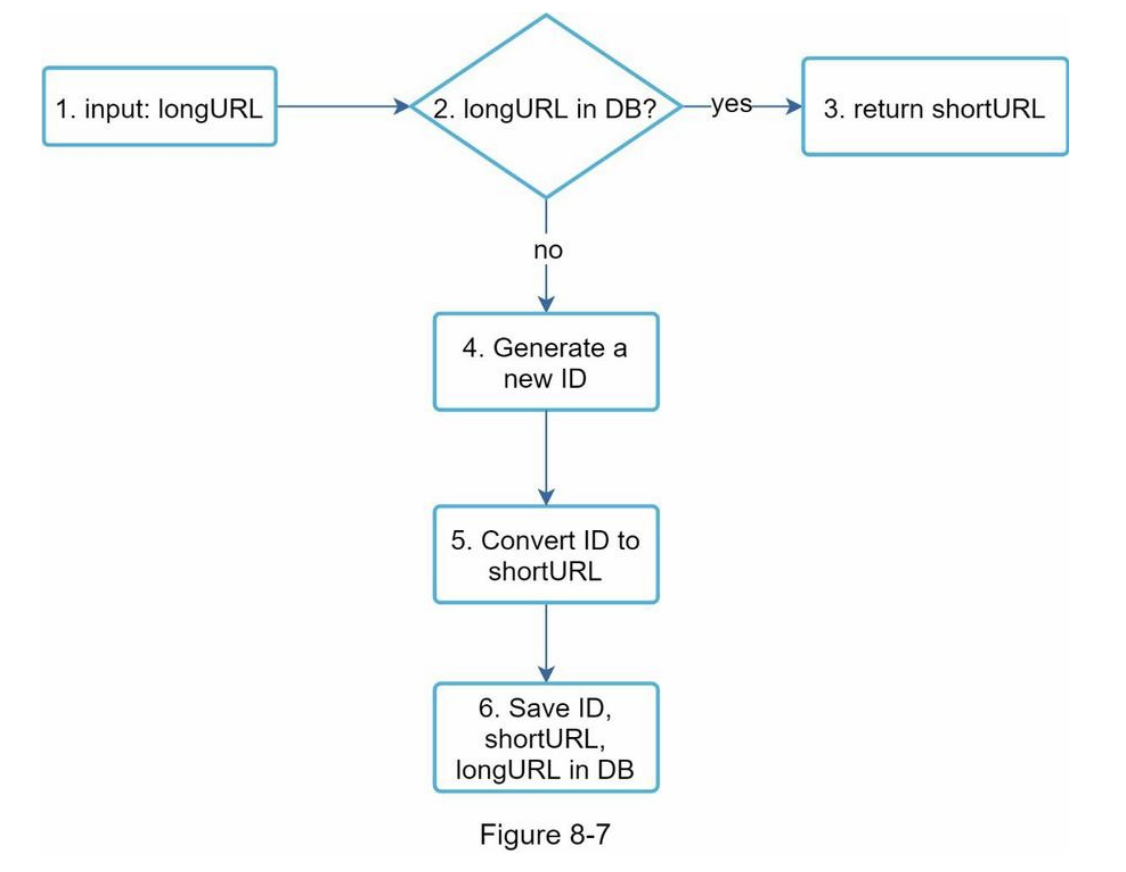
- a concrete example:
- Assuming the input longURL is:
https://en.wikipedia.org/wiki/Systems_design - Unique ID generator returns ID:
2009215674938. - Convert the ID to shortURL using the base 62 conversion.
ID (2009215674938)is converted tozn9edcu. - Save ID, shortURL, and longURL to the database as shown in Table 8-4

URL redirecting deep dive
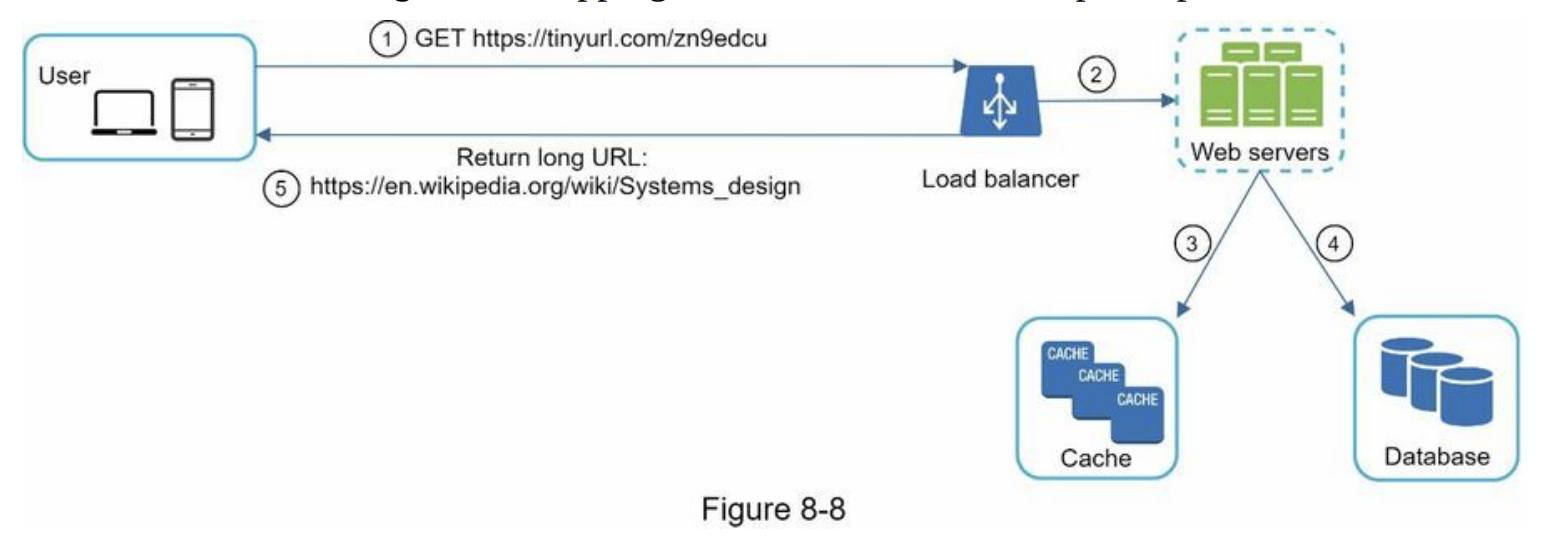
- The flow of URL redirecting is summarized as follows:
- A user clicks a short URL link: https://tinyurl.com/zn9edcu
- The load balancer forwards the request to web servers.
- If a shortURL is already in the cache, return the longURL directly.
- If a shortURL is not in the cache, fetch the longURL from the database. If it is not in the database, it is likely a user entered an invalid shortURL.
- The longURL is returned to the user.
Step 4 - Wrap up
- API design, data model, hash function, URL shortening, and URL redirecting.
- a few additional talking points:
- Rate limiter:
- overwhelmingly large number of URL shortening requests
- Rate limiter helps to filter out requests based on IP address or other filtering rules
- Web server scaling
- Database scaling
- Analytics:
- how many people click on a link? When do they click the link? etc.
- Availability, consistency, and reliability
- Rate limiter: